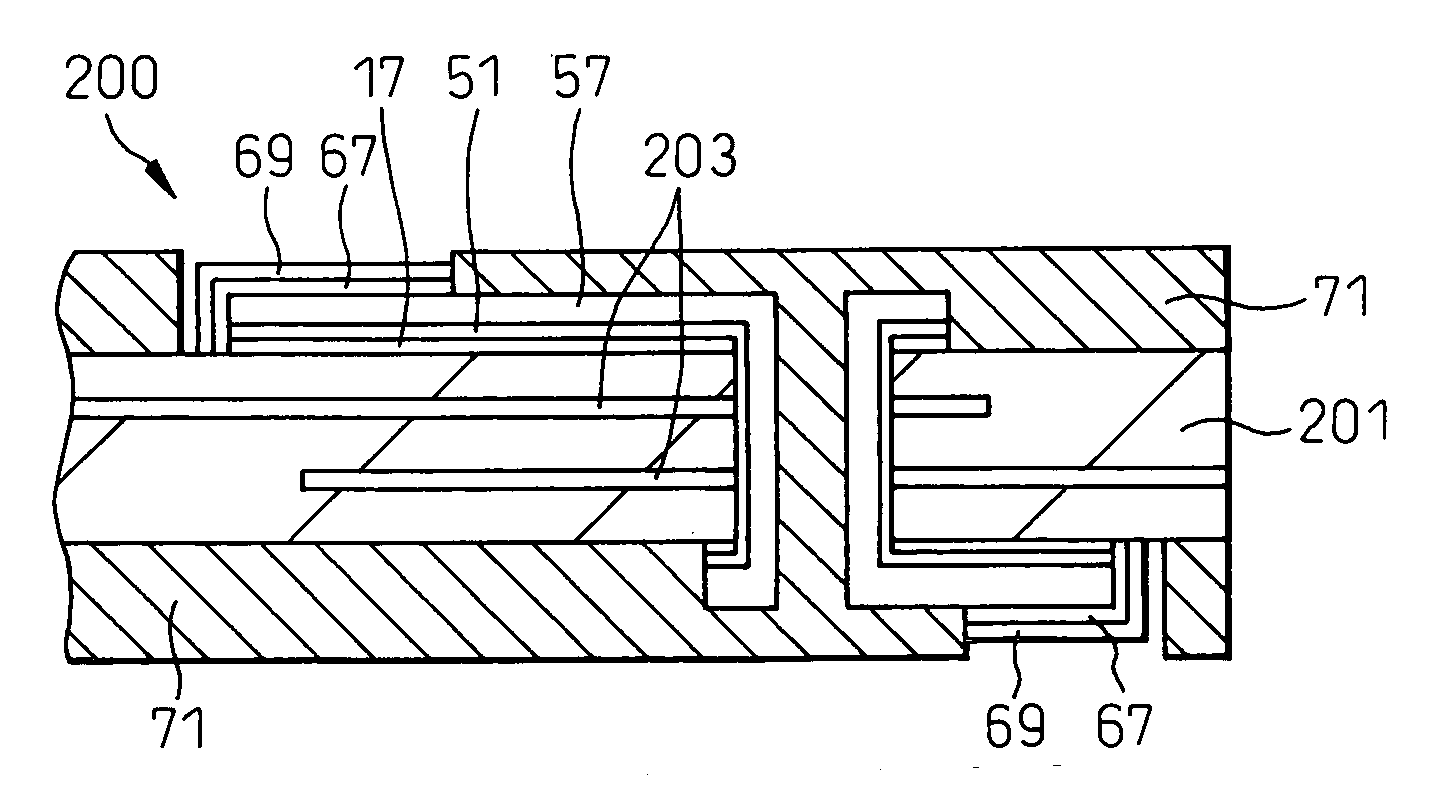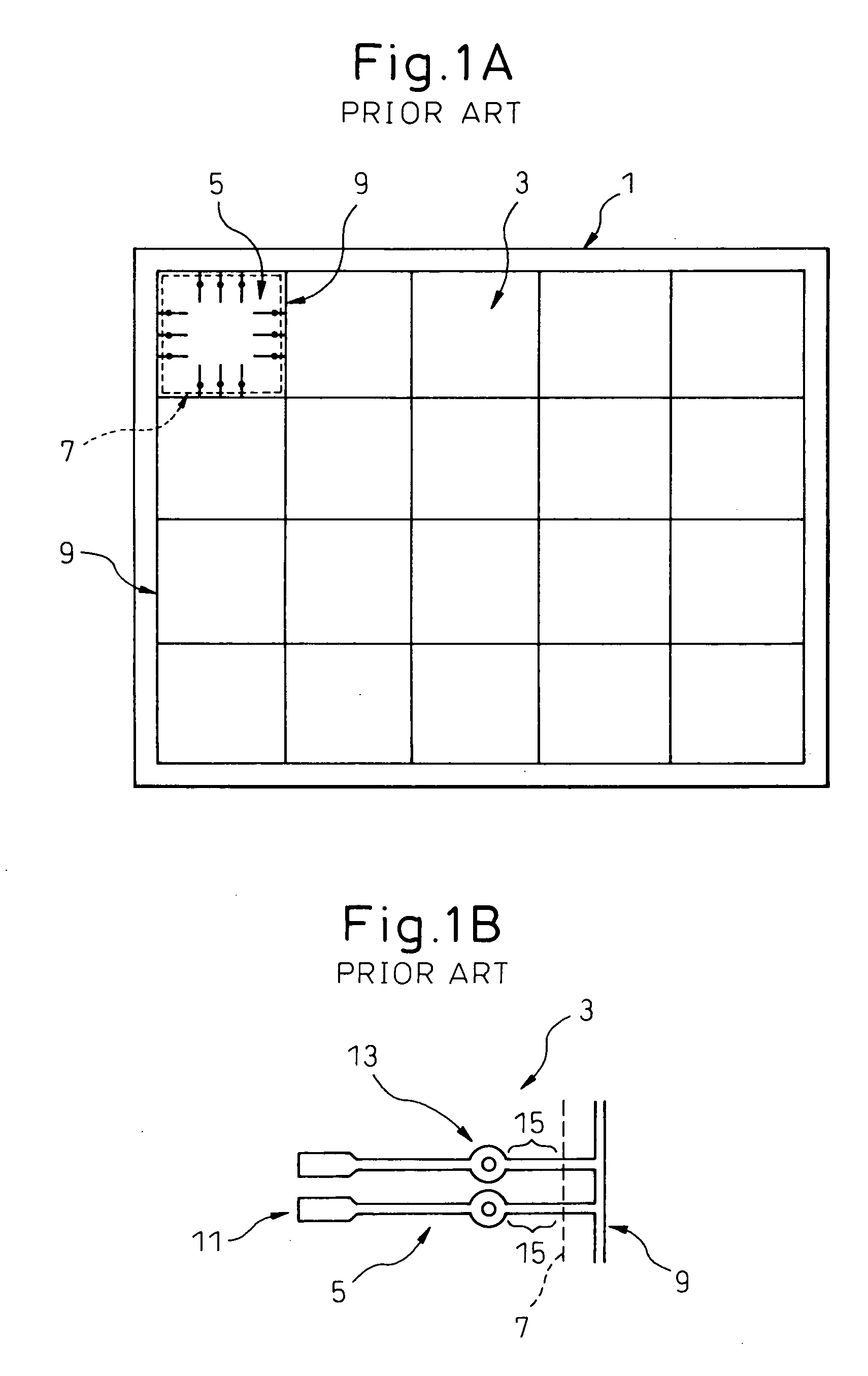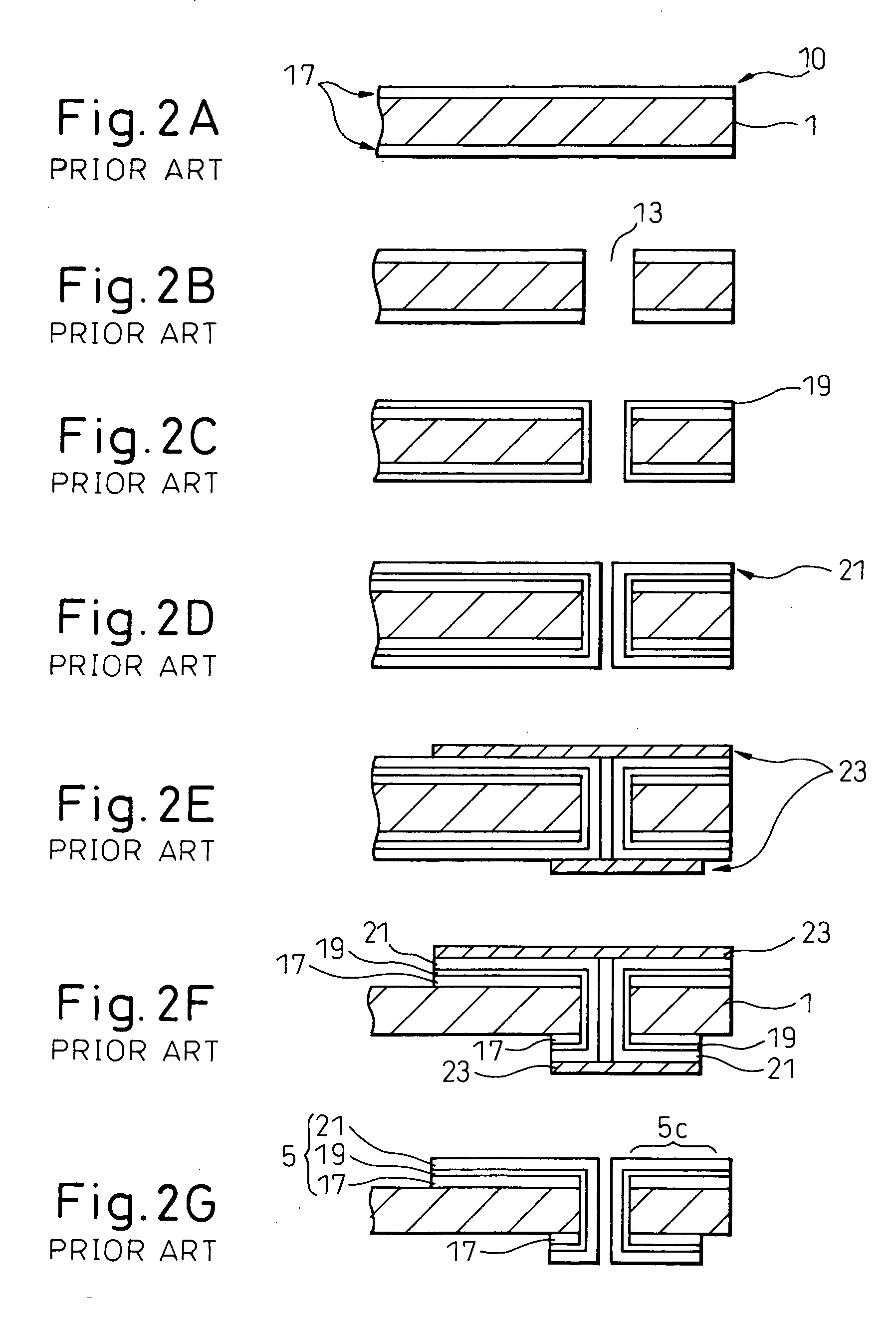Method of production of circuit board utilizing electroplating
- Summary
- Abstract
- Description
- Claims
- Application Information
AI Technical Summary
Benefits of technology
Problems solved by technology
Method used
Image
Examples
first embodiment
[0040] Below, a first embodiment of the present invention will be explained with reference to FIGS. 4A to 4N. In the following explanation, the dimensions of the different parts are only representative examples. There is no need to limit the invention to these dimensions.
[0041] First, as shown in FIG. 4A, a double-sided copper foil 17 (thickness 1 to 31 μm)—clad glass cloth—containing epoxy resin board 1 (thickness 0.03 mm or more) is prepared.
[0042] Next, as shown in FIG. 4B, a drill is used to form through holes 13 (opening diameter 35 to 350 μm) in the board 1.
[0043] Next, as shown in FIG. 4C, a first copper electroless plating layer 51 (thickness 0.01 μm or more) is formed on the copper foil 17 and in the through holes 13. The first copper electroless plating layer 51 later forms the power feed layer for the copper electroplating. 0.01 μm or so of thickness is sufficient for functioning as a power feed layer. The first copper electroless plating layer 51 may have a maximum th...
second embodiment
[0065] The method of the present invention may also use a double-sided copper foil-clad multilayer board.
[0066] First, as shown in FIG. 6A, a double-sided copper foil-clad multilayer board 201 (thickness 80 to 500 μm or so) comprised of a glass cloth-containing epoxy resin board on the two surfaces of which copper foil 17 (thickness 1 to 3 μm) is clad and formed inside with circuit patterns 203 is prepared.
[0067] Next, as shown in FIG. 6B, this board 201, in the same way as the first embodiment, is formed with through holes 13 (opening diameter 35 to 350 μm or so).
[0068] Next, as shown in FIG. 6C, in the same way as the first embodiment, the first copper electroless plating layer 51 (thickness 0.01 μm or more) is formed.
[0069] After this, processing is performed in the same way as the steps of the first embodiment shown in FIG. 4D to FIG. 4N, whereby the multilayer circuit board 200 shown in FIG. 6D is completed. This structure is similar to the structure of the first embodiment...
PUM
 Login to View More
Login to View More Abstract
Description
Claims
Application Information
 Login to View More
Login to View More - R&D
- Intellectual Property
- Life Sciences
- Materials
- Tech Scout
- Unparalleled Data Quality
- Higher Quality Content
- 60% Fewer Hallucinations
Browse by: Latest US Patents, China's latest patents, Technical Efficacy Thesaurus, Application Domain, Technology Topic, Popular Technical Reports.
© 2025 PatSnap. All rights reserved.Legal|Privacy policy|Modern Slavery Act Transparency Statement|Sitemap|About US| Contact US: help@patsnap.com



